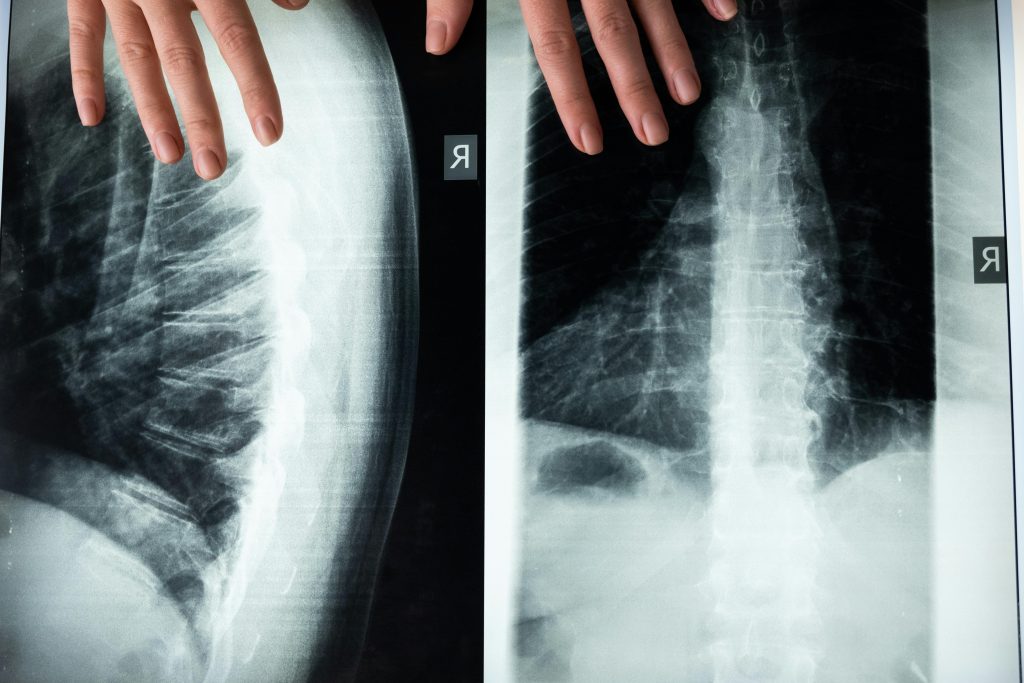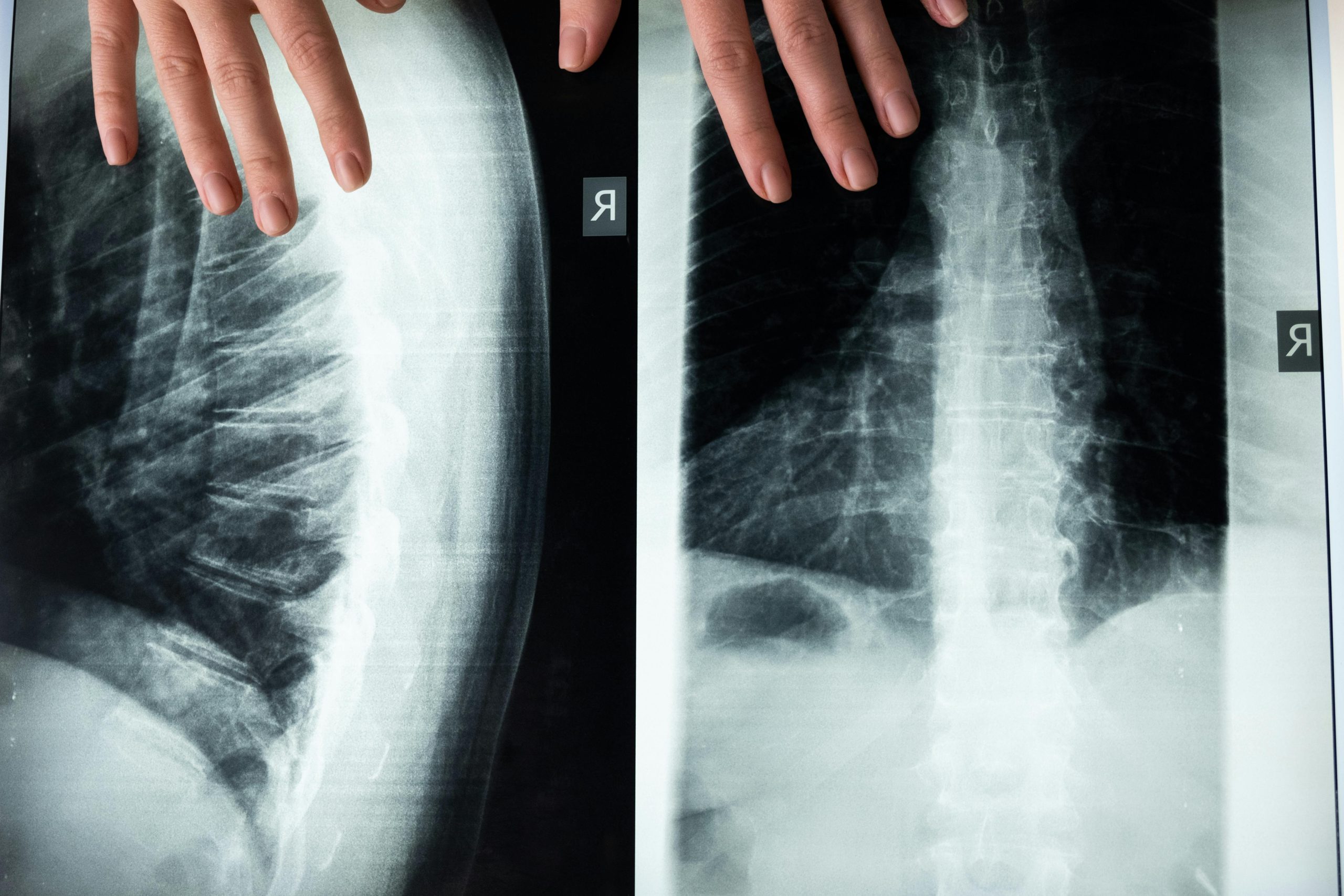Chronic back pain is one of the most common health problems in the world. For many people, the culprit is intervertebral disc degeneration (IDD or IVD) — the breakdown of the soft, cushion-like cartilage-based discs that separate the bones of the spine. These discs are vital shock absorbers, allowing us to move, bend, and carry weight without pain. But as they wear down, people can experience stiffness, nerve compression, radiating leg pain, and even disability.
Traditional treatments such as pain medication, physical therapy, or spinal surgery may help manage symptoms. However, they don’t truly regenerate or restore the spinal discs themselves. This has led researchers to explore regenerative therapies that extend beyond symptom management, aiming instead for cellular healing and repair.
A leading breakthrough in regenerative medicine is the use of stem cells to repair spinal disc cartilage, strengthened by the healing signals of extracellular vesicles (exosomes) and the supportive structure of hydrogels. A recent review in Biomedicine & Pharmacotherapy highlights how the synergy of these three tools are paving the way for true disc regeneration rather than just temporary effects from more traditional therapies.

What Causes Spinal Disc Degeneration?
Intervertebral discs are made of a gel-like core (nucleus pulposus) surrounded by a fibrous outer layer. Surrounding that is a different cartilage that serves to contain the inner nucleus. This outer ring is called the annulus. Over time, aging, repetitive strain, or injury can cause these discs to dry out, weaken, and collapse. This process, known as disc degeneration, affects nearly 60% of people over the age of 60. It is correlated to the osteoarthritis process in other joints.
When discs degenerate, they lose their ability to cushion the spine, leading to pain, stiffness, inflammation, and in severe cases, nerve compression. While common treatments only target pain and inflammation, they cannot rebuild the cartilage or repair the disc structure. That’s why the question, “Can stem cells regenerate spinal discs?” has become so important.
Can Stem Cells Regenerate Spinal Discs?
The short answer: yes, as recently demonstrated in the referenced study.
Mesenchymal stem cells (MSCs) are adult stem cells found mainly in bone marrow, fat, and umbilical cord tissue. MSCs have an impressive ability to transform into disc-like cells. They can become nucleus pulposus-like cells, which are essential for disc cushioning and hydration.
Additionally, MSCs release powerful anti-inflammatory signals and growth factors. These serve to improve the disc environment, calm inflammation, slow degeneration, and stimulate repair. Animal studies show that stem cell regeneration of spinal discs can restore disc height and reduce pain behaviors. Early human trials suggest injections are safe and may offer lasting improvements, though more large-scale studies are needed.
The Role of Extracellular Vesicles: Healing Messages
Interestingly, stem cells may not need to survive long-term inside the disc to create benefits. Much of their healing effect comes from extracellular vesicles (EVs) — tiny “packages” they release. These vesicles are commonly referred to as “exosomes.”
EVs carry proteins, RNAs, and bioactive molecules that act as healing messages, instructing damaged disc cells on how to repair themselves. Research shows EVs can:
- Reduce inflammation inside degenerated discs.
- Prevent disc cell death in the harsh, low-oxygen environment.
- Stimulate rebuilding of the extracellular matrix — the structural framework that gives discs strength.
This makes EVs an exciting cell-free therapy for helping to address back pain and structural regeneration.
Hydrogels: Protecting and Delivering Stem Cells
The challenge for both stem cells and EVs is MSC survival. The spinal disc environment is tough, low in oxygen, low in nutrients, and under constant pressure. Stem cells often die off after injection, and EVs cannot be produced in an adequate number, and degrade too quickly.
Hydrogels provide a solution. These water-rich, sponge-like biomaterials mimic natural tissues and act as carriers. By embedding stem cells or EVs inside a hydrogel, they are protected, nourished, and released gradually.
This allows for controlled delivery: instead of disappearing quickly, stem cells and EVs continue working over time. Early research suggests that hydrogels may be the key to making stem cells permanently repair spinal discs.
Can Stem Cells Regrow a Spinal Disc?
While stem cells may not literally “grow a brand-new disc,” research shows they can regenerate the most important components. This includes restoring hydration, strengthening the extracellular matrix, reducing inflammation, and improving disc height.
In this sense, stem cells don’t replace the disc completely but regrow the cartilage and cushioning structures that are vital for function. For patients, this could mean less pain, improved movement, and better quality of life.
Can Stem Cell Injections Regenerate Spinal Discs?
This is one of the most frequently asked questions. Early clinical trials of stem cell injections have reported encouraging results:
- Patients experienced reduced pain and improved mobility.
- Imaging showed partial restoration of disc height and structure.
- Safety records were positive, with few adverse effects.
While these are early studies, they confirm that stem cell injections for disc regeneration are on the right path. Researchers are now enhancing this approach by combining stem cells with EVs in hydrogels for even better outcomes.
The Future of Back Pain Treatment
The idea of stem cell regeneration of spinal discs represents a turning point in medicine. Instead of just treating symptoms, we are hot on the trail of being able to reverse the root cause of degeneration.
The combination of stem cells, extracellular vesicles, and hydrogels, as the study demonstrated, is especially powerful for achieving disc regeneration. Stem cells and vesicles provide the healing power, while hydrogels create the supportive environment needed for lasting regeneration.
For the millions living with back pain, this isn’t just about temporary relief — it’s about restoring spinal health and reclaiming quality of life. Back pain doesn’t have to define your future. If you’d like to learn more about regenerative solutions, contact the experts at ReCELLebrate today and take the first step toward relief.

